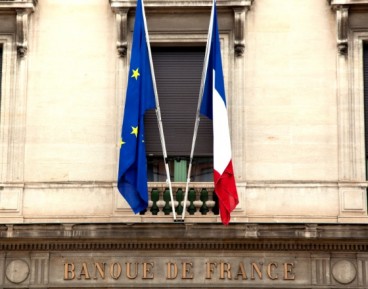Energy and climate transitions: current and future challenges
Category: Macroeconomics

Pierre Wunsch, Governor of the National Bank of Belgium (©Patrick Van den Branden from the National Bank of Belgium)
The heightened uncertainty on energy markets, along with skyrocketing natural gas and electricity prices, has added new urgency to efforts to speed up the clean energy transition in an orderly fashion.
Need to combine smooth reallocation and innovation to reach EU’s ambitious goals
Global warming is a very serious long-term risk for economic activity and with a very significant impact for life on Earth. The required green transition to address this issue has a global dimension too, which involves reforms capable of achieving permanent changes in consumption behaviour and production choices. Against this backdrop, the European Union has set ambitious targets for reducing its greenhouse gas emissions, increasing the share of renewables in energy consumption, and improving energy efficiency. Carbon emission neutrality is to be achieved by 2050, with an interim target for 2030 set at a 55% reduction in greenhouse gas emissions from 1990 levels. This is a major challenge in view of the very short time scale left to make these changes.
The transition to less carbon-intensive activity and to a renewable energy supply and, beyond that, the greening of the overall economy will require a reallocation of labour and capital but also innovative solutions to align further economic growth with the green transition and boost economic resilience. Substantial public and private investment is needed, supported by structural reforms to allow a smooth reallocation to sectors with strong growth potential.
A carbon price signal to sustainably change production and consumption habits
From an economic perspective, it is best to achieve the transition at the lowest possible cost by using a carbon price signal. Some choices by economic stakeholders do in fact generate environmental costs – or externalities – that are not automatically translated into the market prices they pay for fossil energy sources. These costs may be internalised in the shape of a carbon price that forces economic stakeholders to always consider the cost of their ecological footprint when deciding on their consumption and investment. Provided the future development of such taxation is announced in good time, it could strongly steer businesses and households towards the most cost-efficient way of helping meet the targets.
In principle, a specific tax on the carbon content of the type of energy would be the best way of encouraging the transition by making the use of fossil fuels relatively more expensive than renewable energy sources. It will generate additional tax revenue for the State that can be invested in the economy or redistributed to vulnerable groups to offset the regressive impact of this kind of taxation. Compared to the implicit carbon price arising from trading a limited and diminishing number of emission allowances as is the case under the European emissions trading system (EU‑ETS) for large emitters, a tax has the advantage of being less volatile, but it shifts the uncertainty on pollution emission volumes. Conversely, the EU‑ETS actually pinpoints the emission volumes and emission prices are determined endogenously in the markets.
Political constraints and distributional considerations favour a balanced package of various measures. The public authorities’ framework includes a combination of regulation, taxation, subsidies and investment. Their effectiveness in contributing to least-cost emission reductions is dependent on their ability to influence the implicit price of carbon.
No need for sharply rising energy prices to make investing in green energy financially attractive
Taxing fossil fuels means that gas, oil and the products and services which rely on them become more expensive. Yet, such policies do not imply an instant repeat of today’s energy crisis.
Firstly, the current sharp rise in energy prices is not driven by taxation related to climate policy but by a substantial increase in the price of the energy source itself. As natural gas and oil are overwhelmingly imported, the higher energy costs flow abroad and impoverish the economy. A carbon price, on the other hand, provides additional tax revenue that can be invested in the economy or redistributed.
Second, the price escalation recorded since last summer is very brutal and unexpected while an optimum carbon tax/price should tick up gradually following a clear pre-announced path, so that everyone can adjust their decisions and behaviour accordingly on a permanent basis. To achieve the capital spending inherently needed in the transition – particularly spending on energy projects ‑, it is essential that uncertainty is reduced by providing a predictable and credible view of the medium- and long-term developments in this carbon tax/price scheme.
Third, technological developments and economies of scale have made green energy competitive. According to a study commissioned by the European Commission in 2018, the average levelised cost of electricity[1] for power generation plants operational in the EU was estimated at € 59 and € 84 per MWh for onshore and offshore wind energy, € 87 per MWh for large-scale solar photovoltaic energy projects and € 133 per MWh for individual ones. Various options have levelised costs that are below those for combined-cycle gas turbines (€ 98 per MWh) and well below electricity prices observed in the markets in the first five months of this year, i.e. around € 155 per MWh for delivery in 2023. Even if such estimates do not take into account the cost arising from the intermittent nature of these power generation options, the price of electricity based on green sources may be lower than the levels observed up to now in 2022. So, investment in the field is already proving financially attractive with energy prices below the levels repeatedly seen in recent months and will certainly be so if the cost price of green technologies continues to decline. Furthermore, in today’s tense geopolitical context, the transition to carbon neutrality is even more relevant to reduce the dependence on – Russian – fossil fuels.
To achieve all this, margins will have to be found within the framework of a sustainable fiscal policy: the transition will probably come at a cost – no utopia of a happy transition –, but this does not seem insurmountable: from a gain of 1.3%, though probably too optimistic a range, to a cost of 2.5% of GDP in 2050 according to the European Commission. And a thirty-year challenge is not the same as emergency crisis management that should nevertheless avoid taking steps that lock the economy into carbon-intensive infrastructure and behaviour.
—
The article is published in a series of articles in Obserwator Finansowy written by governors of central banks and distinguished economists. The series is under the special patronage of the Governor of Narodowy Bank Polski, Professor Adam Glapiński. The authors of the articles have agreed to waive their fees for writing the texts, and in exchange NBP shall donate the amount equivalent to the fees onto the account of the National Bank of Ukraine in order to support the NBU during the war. Below is a foreword by the Governor of NBP to the whole series:
On 24 February a huge tragedy occurred, in the face of which it is impossible to simply move on as if nothing had happened.
Nobody can remain indifferent to the misfortune that has befallen the Ukrainian nation.
All of us are shocked by the press reports, and particularly by what we see in the mass media.
Fighting Ukraine is not only its brave soldiers, but also an army of thousands of civilians trying to preserve normality in a country stricken by Russian aggression.
This army includes the staff of the National Bank of Ukraine, with whom NBP is in constant contact.
Aware of our Ukrainian colleagues’ needs, we have invited several central bank governors and eminent economists to share their knowledge on the economic processes taking place around the world.
It is rare for such a distinguished group of authors to feature in Obserwator Finansowy, which is published by NBP. It is also worth underlining that all the authors have waived the fees for their articles in order to donate them to meet the needs of our colleagues working in the National Bank of Ukraine.
I believe that you will find the series of these articles interesting, especially since they not only share the knowledge and experience of their authors, but also express goodwill towards the war-afflicted NBU.
Prof. Adam Glapiński, Governor of NBP
[1] Average net present cost (investment, operation and maintenance expenses) per unit of electricity generated during an assumed financial life and utilisation rate for each plant type.



